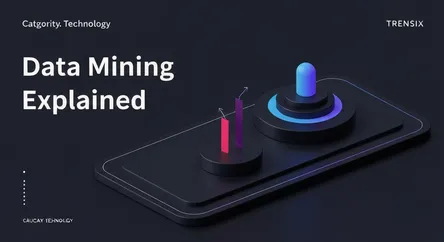Technology
Data Mining Explained

Discover the power of data mining. Learn how this process uncovers hidden patterns and insights from large datasets to predict future trends.
What is it?
Data mining is the process of discovering patterns, correlations, and anomalies within large sets of data to predict outcomes. Often called Knowledge Discovery in Data (KDD), it's an interdisciplinary field that uses techniques from machine learning, statistics, and database systems. The goal isn't just to extract data, but to extract valuable, actionable insights from it. Imagine sifting through mountains of raw information to find nuggets of gold; that's essentially what data mining algorithms do for businesses and researchers, identifying everything from consumer buying habits to fraudulent financial transactions.
Why is it trending?
The rise of 'big data' is the primary driver behind data mining's popularity. As companies collect unprecedented volumes of information from websites, social media, and IoT devices, they need powerful tools to make sense of it all. Data mining provides the means to turn this raw data into a competitive advantage. Furthermore, advancements in processing power and the development of more sophisticated algorithms have made it more accessible and effective than ever before, enabling organizations to make data-driven decisions with greater accuracy.
How does it affect people?
Data mining impacts daily life in numerous ways. It powers the personalized recommendations you see on streaming services and e-commerce sites, helps banks detect credit card fraud in real-time, and assists doctors in diagnosing diseases earlier. However, it also raises significant privacy concerns. The same techniques used for marketing can be used to create detailed profiles of individuals without their explicit consent, leading to debates about data ownership, security, and ethical use. This has led to increased regulation, such as GDPR, to protect personal information.